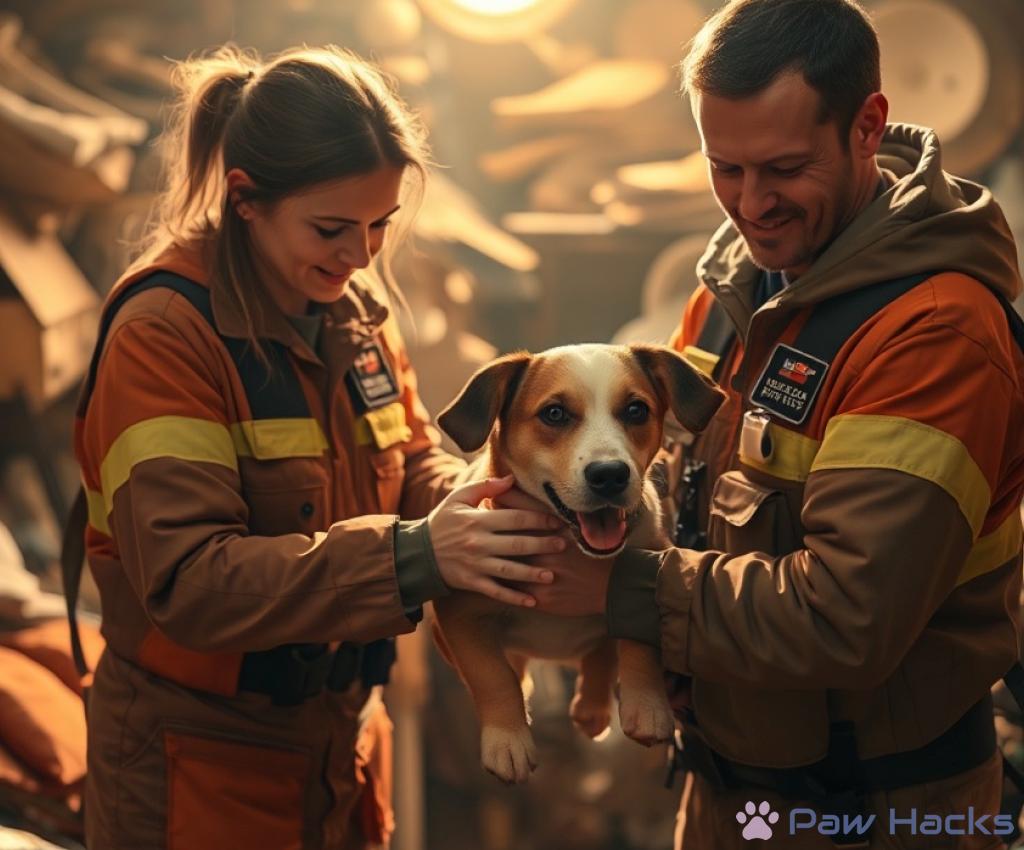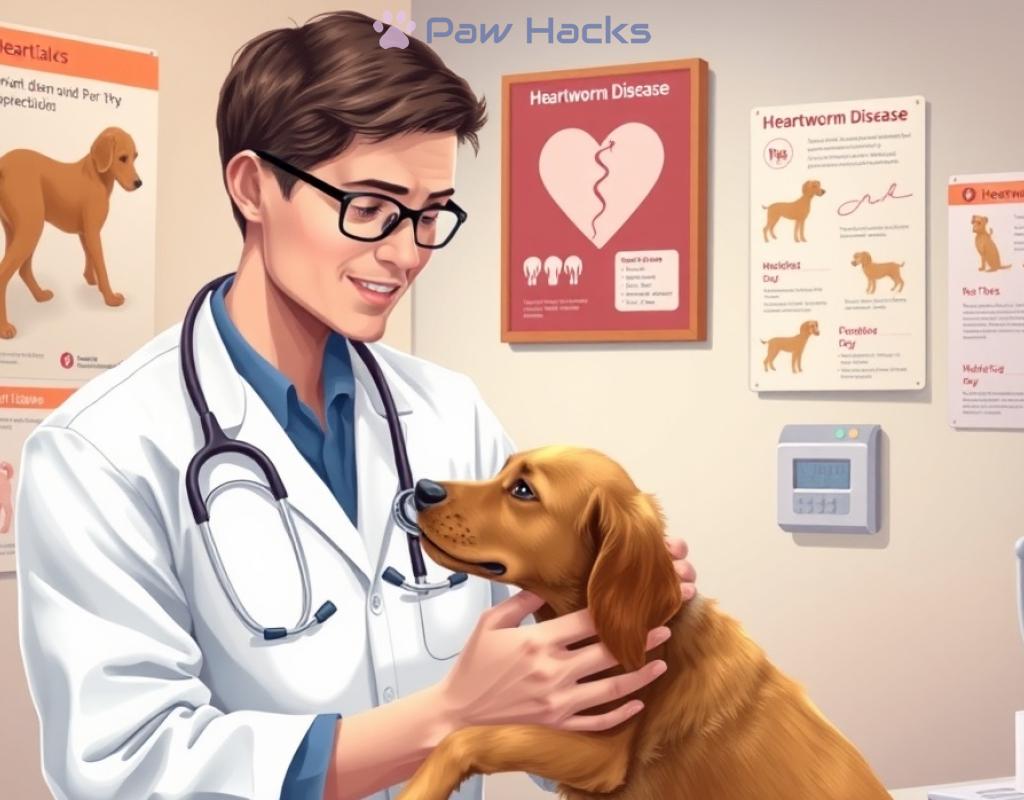Rescuing Pets from Hoarder Situations
Understanding the Signs: How to Identify a Hoarding Situation

Hoarding situations can start small and gradually spiral out of control, often going unnoticed until it’s too late. It’s essential to be able to identify the early signs that indicate a potential hoarding situation, especially when animals are involved. This knowledge can empower you to take action before the situation worsens.
Some common red flags are:
- Excessive accumulation of pets beyond the caretaker’s ability to provide proper care.
- Poor living conditions that are unsanitary and unsafe for both pets and humans.
- Lack of veterinary care for the animals.
- Social isolation of the owner, often avoiding interactions with neighbors and friends.
- Frequent reports of noise, such as barking, coming from the residence.
Hoarding can have severe consequences for the animals involved. Many pets in these situations suffer from neglect, malnutrition, and health issues due to the lack of proper care and attention. Recognizing the impact of hoarding on these animals is vital for anyone who suspects a hoarding situation.
Some of the physical signs to look for include:
| Physical Signs | Description |
|---|---|
| Fleas or Ticks | Presence of parasites often indicates poor hygiene and care. |
| Malnourishment | Visible ribs or signs of starvation suggest inadequate feeding. |
| Injuries or Illness | Unattended wounds or diseases that have gone untreated. |
| Overcrowding | Multiple animals in a confined space, leading to stress and anxiety. |
If you suspect a hoarding situation, it’s crucial to approach the matter with sensitivity and care. Reporting your concerns to local animal control or rescue organizations can initiate the necessary interventions. Being informed and proactive can significantly change the lives of these animals and their owners.
Here are steps you can take:
- Document your observations with photographs and notes.
- Contact local authorities or animal welfare organizations.
- Encourage the owner to seek help, approaching them with compassion.
- Be persistent in your efforts to ensure the animals receive the care they need.
The Rescue Process: Steps to Save Pets in Crisis

When a hoarding situation is identified, the rescue process plays a crucial role in alleviating the suffering of neglected pets. This process not only focuses on removing animals from harmful conditions but also emphasizes the need for a structured approach to ensure their safety and well-being. Understanding the steps involved can empower individuals and organizations to act decisively and compassionately.
Initial Assessment and Planning is the first critical step in the rescue process. Before any action is taken, a thorough assessment of the situation must be conducted. This involves gathering information about the number of animals involved, their living conditions, and the specific needs of each pet. Engaging with local animal control and rescue organizations is essential for planning a coordinated effort. Having a solid plan allows rescuers to address the immediate needs of the pets while also considering the long-term implications of their care.
Once the initial assessment is complete, the next phase involves Executing the Rescue. This is often the most sensitive part of the process, as it requires a careful balance between urgency and compassion. Rescuers must approach the situation with caution to avoid alarming the animals or the hoarder, who may not fully understand the severity of the conditions. Using trained professionals, such as veterinarians and animal behaviorists, is critical to ensure that the pets are handled appropriately and safely. The goal is to minimize stress for the animals while providing them with the immediate care they desperately need.
Finally, after the rescue has been successfully conducted, Post-Rescue Care and Rehabilitation becomes a priority. Many of the pets rescued from hoarding situations will require extensive medical treatment and behavioral rehabilitation. This stage is crucial for helping the animals recover from trauma and adapt to a new, healthier environment. Organizations involved in the rescue process should be prepared to provide ongoing support, including veterinary care, socialization, and, when necessary, finding permanent loving homes for the pets. The journey does not end with the rescue; it is vital to continue focusing on the welfare of these animals to ensure they have a brighter future.
Rehabilitation and Recovery: Helping Rescued Pets Heal
Once the harrowing ordeal of the rescue is over, the real work begins. Rehabilitation and recovery are crucial to restoring the health and happiness of pets saved from hoarding situations. This phase is not just about addressing physical ailments; it also requires a deep understanding of the emotional scars these animals may carry. Creating a nurturing environment for their recovery can significantly enhance their quality of life and help them thrive in their new surroundings.
Every rescued pet has a unique story, and their healing journey will reflect that. Some pets may require immediate medical attention, while others may need gentle, gradual exposure to new experiences. Understanding the individual needs of each animal is essential in tailoring a rehabilitation plan. Here are some key factors to consider:
- Medical Care: Many pets rescued from hoarding situations face various health challenges. Regular check-ups, vaccinations, and treatment for any existing conditions are fundamental to their recovery.
- Behavioral Assessment: Understanding the behavioral issues that may arise from neglect or trauma is vital. Professional evaluation can guide rehabilitation efforts and help identify appropriate training methods.
- Socialization: Rescued pets often struggle with trust and fear. Gradual socialization with humans and other animals can help them regain confidence and learn to interact positively.
- Nutrition: A balanced diet is crucial for physical recovery. Providing high-quality food can help restore energy levels and overall health.
- Patience and Love: Healing takes time. Offering consistent love and patience will nurture their emotional recovery and help them adjust to their new life.
The environment in which a rescued pet recovers can profoundly impact its rehabilitation. A safe, calm, and welcoming space encourages a sense of security and belonging. Here are some ways to create a supportive setting:
- Establish a quiet space where the pet can retreat when feeling overwhelmed.
- Introduce new experiences slowly, allowing the pet to explore at their own pace.
- Utilize positive reinforcement techniques during training to build trust.
- Incorporate routine to provide stability and predictability in their daily lives.
- Encourage gentle interaction and play to foster bonding and social skills.
In conclusion, the rehabilitation and recovery of pets rescued from hoarding situations are multi-faceted processes that require dedication, compassion, and understanding. By focusing on their individual needs and creating a supportive environment, we can help these deserving animals heal and eventually find loving forever homes.
The Role of Community: Coming Together to Fight Pet Hoarding
The issue of pet hoarding is a complex problem that often requires more than just the efforts of individual rescuers or organizations. It calls for a collective response from the community—an understanding that every member has a part to play in addressing this pressing issue. By fostering a sense of community responsibility, we can create a more supportive environment for both the animals and the individuals struggling with hoarding behaviors.
Community Awareness and Education plays a pivotal role in combatting hoarding situations. The first step involves raising awareness about the signs of hoarding and the negative consequences it has on pets and their owners. When community members are educated about the issue, they can recognize potential red flags early on. Workshops, seminars, and informational campaigns can be instrumental in guiding people to understand how compassion and vigilance can lead to early intervention. By sharing stories of successful rescues, we can inspire others to take action and foster a culture of empathy towards both animals and hoarders.
Moreover, it is essential to promote Collaboration Among Local Organizations. Animal shelters, rescue groups, mental health professionals, and law enforcement agencies must unite to create a comprehensive approach to tackle hoarding situations. By working together, these entities can share resources, knowledge, and expertise, ensuring that no one is left to face the issue alone. This collaborative effort not only enhances the efficiency of rescues but also provides a support network for individuals who may need rehabilitation and counseling for their hoarding behaviors. Community events, such as fundraisers or adoption drives, can also serve as platforms for these organizations to join forces, raising awareness while facilitating the rescue of pets in crisis.
Finally, building a Supportive Community Network is crucial for both rescued pets and their former owners. Creating local support groups for individuals affected by hoarding can provide a safe space for sharing experiences, seeking help, and finding solutions. These networks can also help to prevent future hoarding situations by offering ongoing support and resources. It is through these compassionate connections that individuals can feel less isolated, reducing the stigma associated with hoarding and encouraging them to seek help when needed.
Legal and Ethical Considerations: Navigating the Complexities of Hoarding Cases
When it comes to rescuing pets from hoarder situations, legal and ethical considerations play a pivotal role. These complexities can often create a challenging environment for rescuers, animal control officials, and the hoarders themselves. Understanding the legal framework and ethical responsibilities involved can significantly influence the outcome for both the animals and the individuals in distress.
Legal considerations in hoarding cases often vary by jurisdiction, making it essential for rescuers and animal welfare organizations to be knowledgeable about local laws. In many regions, the law recognizes animal neglect and cruelty as serious offenses, providing mechanisms for intervention. However, navigating these laws can be intricate due to the nuances of individual cases.
Key Legal Aspects Include:
- Animal Cruelty Laws: These laws define neglect and abuse, enabling authorities to take action when animals are suffering.
- Search and Seizure: Understanding when and how authorities can enter a property to rescue animals is crucial.
- Due Process: Ensuring that hoarders are treated fairly and given opportunities for rehabilitation rather than solely facing punitive measures.
The ethical aspects surrounding pet rescue from hoarding situations can be equally complex. Rescuers often grapple with the emotional and moral implications of their actions. Balancing the well-being of animals with the rights of their owners requires sensitivity and careful consideration.
Critical Ethical Considerations Include:
- Compassionate Intervention: Recognizing that hoarders may be struggling with mental health issues and requiring support rather than condemnation.
- Animal Welfare vs. Human Rights: Weighing the immediate needs of neglected pets against the legal rights of the owners.
- Transparency in Action: Communicating openly with all parties involved, including the public, about the rescue process and outcomes.
To navigate the complexities of hoarding cases effectively, rescuers and organizations can adopt several strategies that ensure a balance between legal obligations and ethical responsibilities:
- Collaborative Approaches: Partnering with mental health professionals can provide necessary support for hoarders and improve the chances of successful intervention.
- Community Education: Raising awareness about the signs of hoarding and the resources available for both animals and individuals can promote early intervention.
- Documenting Evidence: Keeping thorough records of the conditions and communications during the rescue can help protect the rights of all involved parties.
By understanding the legal and ethical landscapes of hoarding situations, rescuers can approach these delicate cases with the necessary knowledge and compassion. This dual focus not only aids the animals in need but also respects the complexities of human behavior, ultimately fostering a more humane and just environment for all.
Share this content:



